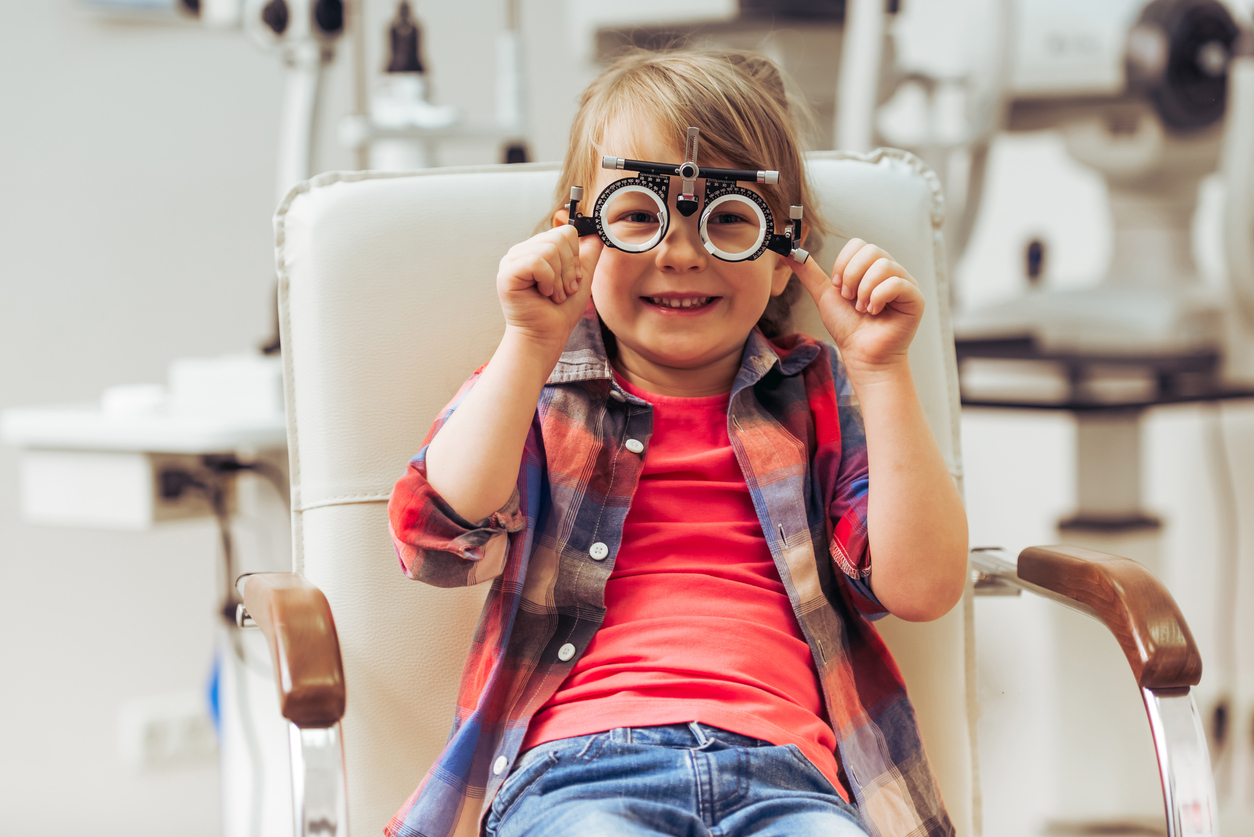A chronic, degenerative condition affecting central vision.
Paediatric Ophthalmology
At our specialist paediatric clinic, we work with children in a fun way. This can make eye tests and treatments easier for children to cope with. The Eye doctor might do tests to work out what your child can see and whether your child’s vision development is on track for his/her age, vision is reduced in one or both eyes, eyes are working well and moving together properly, eye muscles are imbalanced, causing one eye to turn in or out compared to the other – this is often called a squint.
The Eye doctor might also look at other areas of your child’s vision, like how your child sees colours or how well your child sees at different distances. The Eye doctor might also check your child’s pupils and eye pressure to get a full picture of how your child sees the world.
Progressive Vision provide a wide range of Paediatric Ophthalmology services including:
- Comprehensive assessment
- Vision testing
- Squint (strabismus) assessment & medical management
- Prescribing glasses
- Amblyopia detection & management
What is a squint (strabismus)?
A squint is a condition where the eyes do not line up perfectly together in the direction of looking. While one eye looks straight at the object the person is looking at, the other eye is ‘off direction’.
In order for both of our eyes to turn to look at the same thing, we need the eye muscles on one side to coordinate properly with the eye muscles on the other side.
It is quite common to notice a brief squint in children when they are tired or daydreaming. Babies sometimes cross their eyes – it is quite normal for this to happen occasionally, especially when they are tired.
However, about 1 in 500 children have a squint which is more than just occasional tiredness. It is important to seek advice, as these squints can affect your child’s vision

What is amblyopia?
Amblyopia or “lazy eye” is a childhood condition where the brain ignores the signal coming from one eye because is not looking in the right direction (has a squint) or because the eye is out of focus. It’s estimated that 1 in 50 children develop a lazy eye.It usually only affects one eye, and means that the child can see less clearly out of the affected eye and relies more on the “good” eye
The following conditions can lead to a lazy -eye
- a squint – where the weaker eye looks inwards, outwards, upwards or downwards, while the other eye looks forwards
- short-sightedness (myopia), long-sightedness (hyperopia) and astigmatism
- childhood cataracts – cloudy patches that develop in the lens, which sits behind the iris (the coloured part of the eye) and pupil
Lazy eye is often diagnosed during routine eye tests before parents realise there’s a problem. It’s difficult to treat lazy eye after the age of 6, so it’s recommended that all children have their vision tested after their fourth birthday
If you are at all worried about your child’s eye sight, please don’t hesitate to contact us on 01- 2135652 or email info@progressivevision.ie